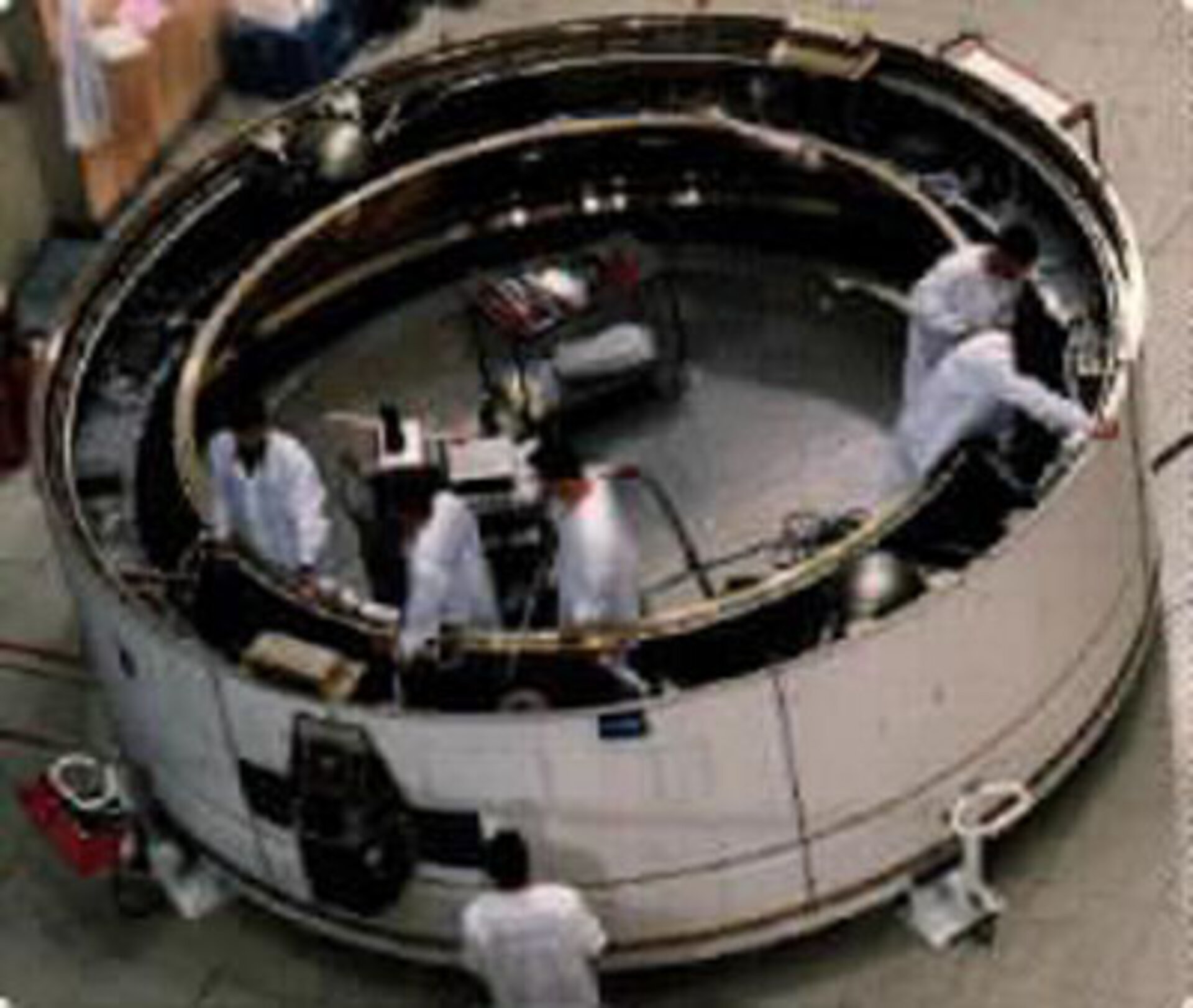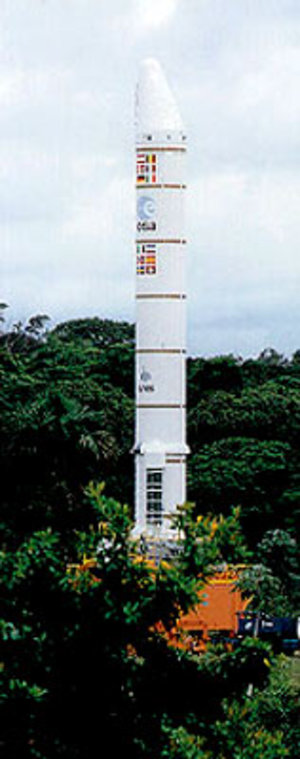Ariane 5 vehicle equipment bay
The vehicle equipment bay (VEB) is often called the ‘brains’ of a launcher. Situated on top of the main cryogenic stage, it interfaces directly with the upper stage.
The Ariane VEB was a big cylindrical ‘basket’ 5.4 m in diameter. It stood 1.56 m tall and weighed 1300 kg without propellant; in the centre is the storable propellant stage (EPS).
The VEB could autonomously orchestrate from start to end all the systems required to control a flight such as engine ignition, separation of the boosters, the upper stage, and operation and release of the individual payloads. Calculations were made by on-board computers and implemented by dedicated electronic systems.
These computers acted on information on the velocity and attitude of the vehicle provided by the inertial guidance units. The inertial reference system was the key to flight control and composed of accelerometers, plus gyroscopes and their electronic units.
One of the features of the Ariane 5 equipment bay was an independent attitude control system that could direct the launcher throughout its propulsion phases to reach the orbit for which it was programmed. The system used 70 kg of hydrazine stored in two 38-litre tanks that fed two sets of three thruster modules.
This attitude control system put the launcher on its roll axis during the propulsion phase, after separation of the solid rocket boosters, and ensured the 3-axes orientation of the satellites upon separation after extinction of the EPS stage.
All equipment in the VEB was duplicated. This is one of the many aspects of basic launcher design that ensured the reliability of Ariane 5 launchers. The attitude control system jets and the telemetry antenna on the external surface of the VEB were also duplicated.
Another major function of the VEB was to send back a steady stream of information to the ground stations to allow the diagnostic of the launcher during its mission.
Responsible contractor: Astrium (France)















 Germany
Germany
 Austria
Austria
 Belgium
Belgium
 Denmark
Denmark
 Spain
Spain
 Estonia
Estonia
 Finland
Finland
 France
France
 Greece
Greece
 Hungary
Hungary
 Ireland
Ireland
 Italy
Italy
 Luxembourg
Luxembourg
 Norway
Norway
 The Netherlands
The Netherlands
 Poland
Poland
 Portugal
Portugal
 Czechia
Czechia
 Romania
Romania
 United Kingdom
United Kingdom
 Slovenia
Slovenia
 Sweden
Sweden
 Switzerland
Switzerland



































